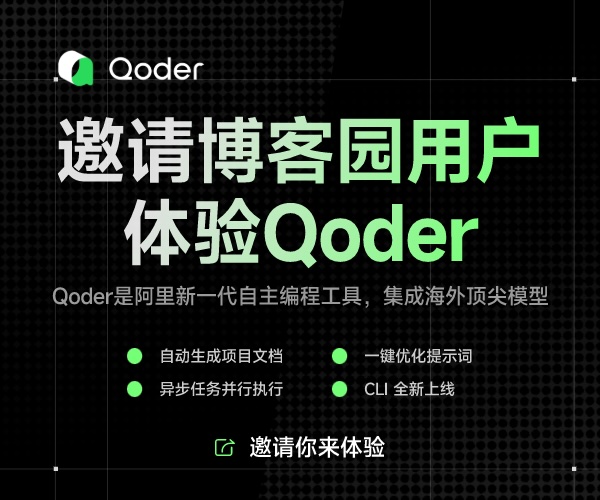Recently, I have read Inside COM, it is not my first time to read it. But still I got some useful information from it.
First of all, rather than inheriting, Containment and Aggregation are the two methods COM used to achieve reusability.
Aggregation is the specialized form of Containment, in which the programmer doesn’t have to implement code in the outer component to forward/delegate a call to the inner component and hence makes the life of a programmer easier. In Aggregation, the outer component hands over the control of the interface, which is being implemented by the inner component, to the client directly and the outer component gets out of the picture. In Aggregation, the interface to the inner component is exposed directly to the client, which is in contrast with the Containment. The outer
Secondly, The IDispatch interface was initially designed to support Automation. It provides a late-binding mechanism to access and retrieve information about an object's methods and properties.In addition to the methods inherited from IUnknown, server developers must implement the following methods within the class definition of each object that is exposed:
First of all, rather than inheriting, Containment and Aggregation are the two methods COM used to achieve reusability.
Aggregation is the specialized form of Containment, in which the programmer doesn’t have to implement code in the outer component to forward/delegate a call to the inner component and hence makes the life of a programmer easier. In Aggregation, the outer component hands over the control of the interface, which is being implemented by the inner component, to the client directly and the outer component gets out of the picture. In Aggregation, the interface to the inner component is exposed directly to the client, which is in contrast with the Containment. The outer
IUnknown and the Inner IUnknown will be having the different implementation of the QueryInterface and hence it violates the basic QueryInterface rules. To forward/delegate calls to the outer IUnknown, the inner component needs the outer component’s IUnknown interface pointer. The outer component passes its IUnknown interface pointer at the time of creating the inner component. The outer component calls CoCreateInstance and passes its IUnknown pointer in the second argument of CoCreateInstance. If this parameter is non-NULL, then the component is being aggregated, otherwise the component is not aggregated. Secondly, The IDispatch interface was initially designed to support Automation. It provides a late-binding mechanism to access and retrieve information about an object's methods and properties.In addition to the methods inherited from IUnknown, server developers must implement the following methods within the class definition of each object that is exposed:
- GetTypeInfoCount returns the number of type descriptions for the object. For objects that support IDispatch, the type information count is always one.
- GetTypeInfo retrieves a description of the object's programmable interface.
- GetIDsOfNames maps the name of a method or property to a DISPID, which is later used to invoke the method or property.
- Invoke calls one of the object's methods, or gets or sets one of its properties.
When the client need to call the method provide by the server, and the code is like this:
1 HRESULT hret=CoInitialize(NULL); assert(SUCCEEDED(hret));
HRESULT hret=CoInitialize(NULL); assert(SUCCEEDED(hret));
2 CComPtr<IDispatch> ptr;
CComPtr<IDispatch> ptr;
3
4 ptr.CoCreateInstance(L"InternetExplorer.Application");
ptr.CoCreateInstance(L"InternetExplorer.Application");
5 if(ptr==0) { wprintf(L"Unable to create Application\n"); return 1; }
6
7 wchar_t *array=L"GoHome";
wchar_t *array=L"GoHome";
9 long id;
long id;
10 hret=ptr->GetIDsOfNames(IID_NULL,&array,1,LOCALE_SYSTEM_DEFAULT,&id);
hret=ptr->GetIDsOfNames(IID_NULL,&array,1,LOCALE_SYSTEM_DEFAULT,&id);
11 assert(SUCCEEDED(hret));
assert(SUCCEEDED(hret));
12
13 DISPPARAMS noparams; memset(&noparams,0,sizeof(noparams));
DISPPARAMS noparams; memset(&noparams,0,sizeof(noparams));
14
15 hret=ptr->Invoke(id,IID_NULL,LOCALE_SYSTEM_DEFAULT,DISPATCH_METHOD,&noparams,NULL,NULL,NULL);
hret=ptr->Invoke(id,IID_NULL,LOCALE_SYSTEM_DEFAULT,DISPATCH_METHOD,&noparams,NULL,NULL,NULL); 
18 CoUninitialize(); return 0;
CoUninitialize(); return 0;
19
 HRESULT hret=CoInitialize(NULL); assert(SUCCEEDED(hret));
HRESULT hret=CoInitialize(NULL); assert(SUCCEEDED(hret));2
 CComPtr<IDispatch> ptr;
CComPtr<IDispatch> ptr;3

4
 ptr.CoCreateInstance(L"InternetExplorer.Application");
ptr.CoCreateInstance(L"InternetExplorer.Application");5 if(ptr==0) { wprintf(L"Unable to create Application\n"); return 1; }
6

7
 wchar_t *array=L"GoHome";
wchar_t *array=L"GoHome";9
 long id;
long id;10
 hret=ptr->GetIDsOfNames(IID_NULL,&array,1,LOCALE_SYSTEM_DEFAULT,&id);
hret=ptr->GetIDsOfNames(IID_NULL,&array,1,LOCALE_SYSTEM_DEFAULT,&id);11
 assert(SUCCEEDED(hret));
assert(SUCCEEDED(hret));12

13
 DISPPARAMS noparams; memset(&noparams,0,sizeof(noparams));
DISPPARAMS noparams; memset(&noparams,0,sizeof(noparams));14

15
 hret=ptr->Invoke(id,IID_NULL,LOCALE_SYSTEM_DEFAULT,DISPATCH_METHOD,&noparams,NULL,NULL,NULL);
hret=ptr->Invoke(id,IID_NULL,LOCALE_SYSTEM_DEFAULT,DISPATCH_METHOD,&noparams,NULL,NULL,NULL); 
18
 CoUninitialize(); return 0;
CoUninitialize(); return 0;19

Third, Connection Points, Com’s Observer Pattern
-Based on Callbacks
-COM-Object can have one or more event sources
-Per event source may be one or more subscribed event sink
-asynchronous communication between a server and its clients
//Client
class myEventSink : public EventSink
{
void handleEvent(int arg)
{ cout << “myEventHandler” << arg << endl; }
};
//Server
[ object, uuid(…) }
interface IEventSource : IUnknown
{
HRESULT Attach( [in] IEventSink* PEveSink);
};
Protocol
IConnectionPointContainer::FindConnectionPoint
IConnectionPoint::Advise //passing sink interface pointer, receiving cookie
IConnectionPoint::Unadvice //terminates notification


